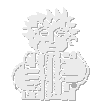 The James Hutton Institute
The James Hutton Institute
This page is no longer updated. The Macaulay Land Use Research Institute joined forces with SCRI on 1 April 2011 to create The James Hutton Institute.
 The Vorarlberg Point-model - integrating agricultural support within "Bioland Vorarlberg", Austria
The Vorarlberg Point-model - integrating agricultural support within "Bioland Vorarlberg", Austria
The Vorarlberg Point-model (Vorarlberger Punktemodell) is the outcome of the working-group "Market measures and Quality assurance", which I presented in connection with AGEX (Arbeitsgruppe Existenzsicherung der Landwirtschaft; consultant, Dr. Berthold Pohl) at the end of 1994. The Point-model is an integrated system for support, consulting, quality-control and marketing for livestock-farmers in Vorarlberg on an uniform basis.
Especially in livestock-farming we as veterinary-officials are often required to define the meaning of "appropriate stockmanship" and to objectify this for juridical implementation in administration. For this purpose we developed the so-called "Tiergerechtheitsindex" (index for species-specific welfare requirements) of Prof. Dr. Bartussek from the Bundesanstalt fur Alpenländische Landwirtschaft in Gumpenstein, Austria. The objective of this index is to grade practices (fields), significant to the well-being of animals, in degrees of quality, finally
to assess the overall quality of stockmanship as appropriate to the animals concerned. Just as appropriate stockmanship an important component of sustainable agriculture, so the Tiergerechtheitsindex is also part of the Vorarlberg Point-model . Besides stockmanship, the feeding and soil cultivation practices were also included. The main objective is to develop a humane, and ecologically balanced agriculture, with a clear categorisation between conventional and organic systems.
Figure 1 (30 kB) Structure of the Point-Model as a basic subsidy for stockmanship plus a bonus for nature conservation and animal welfare
Figure 2 (64 kB) - Detail of the Point model - animal welfare index for cattle
The point-model offers for the first time the possibility to classify a farm on the basis of "ecological processing". The farm first gets described in the various fields and is then classified on uniform criteria. The system structure is simple and clear, so that every farmer is able to classify himself with respect to his farm. The farmer finds his own position on a fine scale from "conventional" to "biological" and always has a short-term and achievable aim in view.
The difference in the method is that we want to guide our farmers to the high target of "biological agriculture" by a step by step policy. The holistic classification of the farm also requires that farmers identify with the principles involved and see the scheme not only as the fulfilment of certain conditions to get particular subsidies. The transparency of this system of farm support gives high social acceptance for further payment of subsidies and social control between the farmers by each other. It is crucial that the transaction of the whole of the agricultural subsidies is
simplified. With the unified description and classification, authorities are able to withdraw direct control and to delegate many steps of control to self-responsibility and self-documentation. There even exists the possibility to organise and carry out the controls of the farms, which have to be done every year on the same criteria, by the farmers themselves in a form of mutual assistance. Most important is the fact, that within this model there is an incentive for performance on subsidies.
The point-model offers the possibility to sustain several classification-criteria which are important for consumers, such as animal-welfare, renunciation of fertilisers, feeding of forages and so on, into regional label-production without any additional efforts.
Further information is available from:
Dr Erik Schmid
Amt der Vorarlberger Landesregierung
Abteilung Veterinärangelegenheiten
Römerstraße, 15
6900 Bregenz
Austria
Tel: +5574 511 2530
Fax: +5574 511 80
24th February 1997